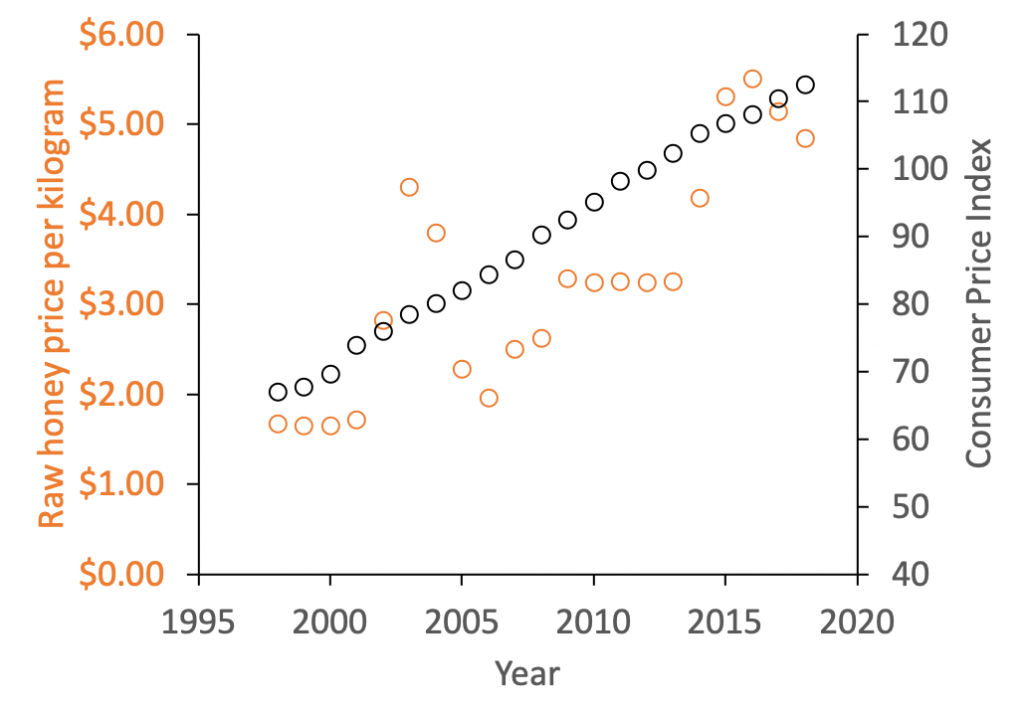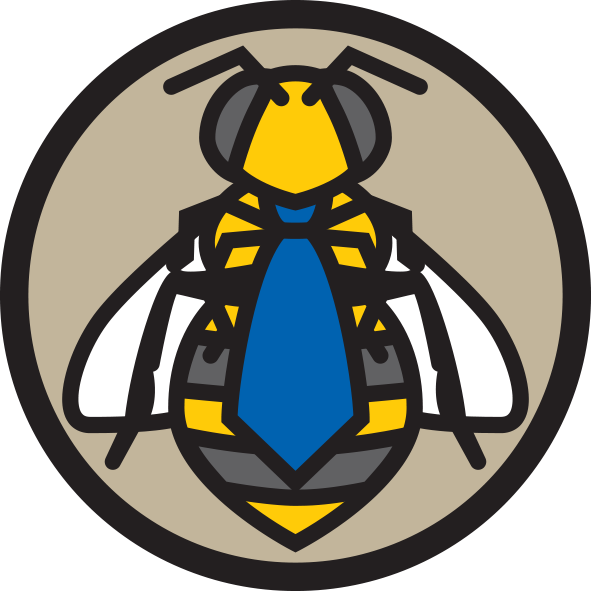More honey More money
“If you just keep using the same bees as we’ve got today, into the future, for people to make a living they are going to have to be getting more money for the honey or getting paid more for the pollination. Whereas if we improve them, people can keep pace with the cost of living, or the cost-price squeeze” Robert Banks
Over the years your bee boxes, queen excluders, frames, wax, queens, supplements, hive tools, honey extractors and wages will all have increased. The price of honey has risen over the years, but not always in line with the Consumer Price Index (CPI). CPI measures changes in the price of certain representative items. This is known as the cost-price squeeze: the cost of producing a product rises, while income from selling the product remains stable or decreases. Your profit margins decrease, while the cost of your groceries and other living expenses increase.
There’s not much you can do about the farmgate honey price. You have probably already identified and changed any areas where your operations could be made more efficient. The only answer is to make more honey. That means more hives, more work and more costs to get those colonies up and running.

Changes in the price of honey on the left axis in orange (source: Capilano) and the Consumer Price Index on the right axis in black (source: ato.gov.au) over time. CPI measures the price of representative consumer items, and is a measure of change in household expenses.
Alternatively, you can use genetic selection to make your hives increase their honey yield. While you’re at it, why not select for other traits that are of interest to you? You can select for anything that you can measure. The important thing is to determine exactly what Australian beekeepers need so that we can work together for a brighter, more profitable, beekeeping future.
Breeding programs have existed for as long as humans have been keeping bees. However, the scientific understanding of how to make gains has increased significantly since then, as has the computing and genetic tools available to us.
Modern honey bee genetic improvement programs have been implemented across the world: the European Union has Smart Bees and Bee Breed, New Zealand has Future Bees and Canada has Beeomics.
An Australian program will be launched in the coming months. Watch this space for more information on the science behind breeding better bees and updates on the Australian program.
Video
Robert Banks, Animal and Genetics Breeding Unit, University of New England presents on the great potential to improve our bees through genetic selection.
Acknowledgements:
- G. Banks & V. Boerner (2015) Genetic evaluation of Australian honey bees using BLUP procedures. Rural Industries Research and Development Corporation Publication 15/104, Canberra ACT
- This article was reviewed by Corinne Jordan and Liz Frost
- About the author Nadine Chapman

